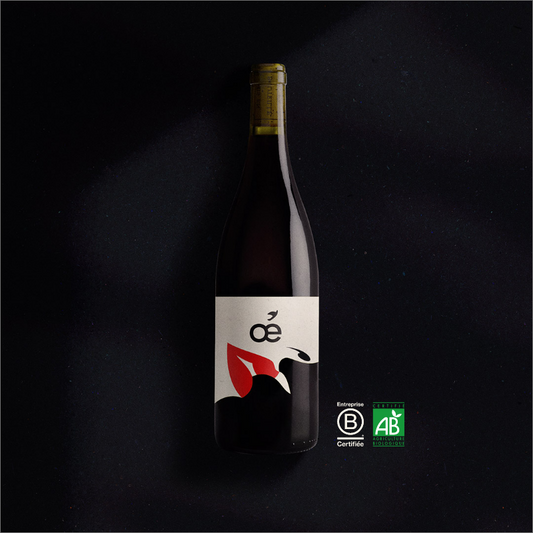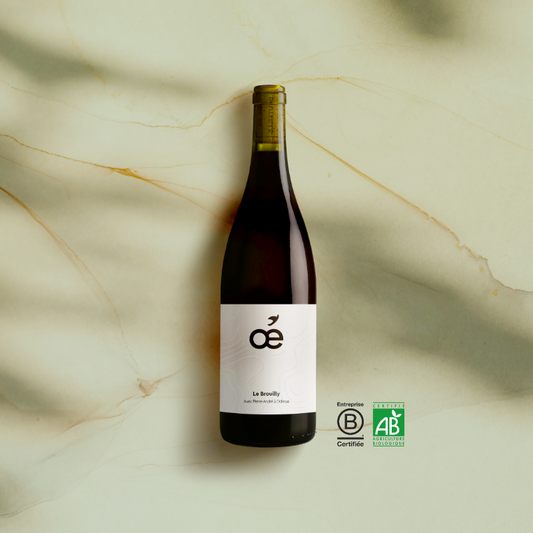In this beautiful month of May, our minds are already beginning to wander about all the wonderful things we will do during our holidays this summer: the sun on our necks during aperitifs with friends, the sand under our feet, the wind in our hair… it's good we're already there.

At Oé, like at most players in the wine industry, it hasn't been for a few days, but for months that people have been thinking about the sand night and day. Daily life is now punctuated by the words shortage of glass , increase in energy , and the terrible words “sorry, we have no more bottles to sell”. While France has never sold so much wine, it is difficult to find bottles to ship it.
More than ever, the subject of bottle deposits is coming back to the fore, and the most cautious in the industry are starting to reconsider their positions. Where, a few months ago, the financial gap between a new or recycled bottle and a reused bottle was still very high (in favor of a new/recycled bottle), the increase of more than 22% in cost of non-reused bottles raises new questions. But above all, where does this meteoric rise come from - but not so surprisingly.
The Ukrainian conflict

Evacuation of Irpin on March 10, 2022 - from Twitter @ArisMessinis for AFP
On February 24, 2022, Russia declared war on Ukraine. After 2 years of global pandemic or “health war” as our President Emmanuel Macron said in 2020, Ukrainians are living a war such as all generations before us have known. A war of violence and power, a war of egos on Putin's side and of economic sanctions on the part of Europe.
Although we hear about it every day, it is difficult for us to imagine what the Ukrainian population is going through. All that seems very far away and yet. Ukraine has a highly developed industry and a very productive agriculture. However, with the war, many of the products and resources that France, among others, imported from Ukraine, stopped crossing the borders. Among these goods: bottles of wine. The glass giant Verallia announced last February the temporary closure of their Zorya plant in Ukraine to protect their employees. At the same time, a national strike in French factories only worsened the situation. Not to mention the Spanish transporters who stopped deliveries and blocked roads to protest against the increase in fuel prices.
In short, it's safe to say that the stars aligned, the gods spoke, and the violins were perfectly tuned to create a massive bottle shortage.
The rise in energies
As a result of the war in Ukraine and the scarcity of natural resources , oil and gas have never been so expensive. No need to be connected to BFM all day to realize it, the bill at the end of the month is crystal clear.

To make glass, you have to use an oven that runs at 1550°C , 24 hours a day, 7 days a week , 365 days a year . Let's add that European ovens work mainly with gas - Russian in this case. The embargo on Russian energies is capital geopolitically speaking but nevertheless remains a financial cataclysm. First for market prices , because in times of war, nothing is certain and the rules that we thought were more certain than unshakeable are no longer so. And then on the final product, because the margins only change in one direction: towards infinity and the beyond. Knowing all this, the fact that transparent wine bottles are more expensive than last year is not surprising.
However, the Russian conflict is not the only reason for the increase in prices, the scarcity of raw materials is the second parent of this crisis. We have been told for years that the reserves of oil, gas and uranium are getting lower and lower. We are drilling further and further, deeper and deeper. We hear about the environmental consequences. But, as Westerners, we had not yet felt the direct effects on our consumption . And that's what allowed us to close our eyes without too much difficulty. It's all over. We no longer have a choice, we have to suffer the consequences of our overconsumption . These consequences in a capitalist world translate into higher prices – the famous law of supply and demand .
Over time, fossil fuels will become more and more expensive, more and more of a luxury that would make a Patagonia down jacket pale. Eventually the supply will disappear and like the Cartesian thinking of Amonbofis - no energy, no bottle production. No bottle production, no wine on our tables. No wine on our tables, no wine....

Commodity tensions
No raw materials, no bottles. And raw materials, we don't have a lot. Whether aluminum, copper, gold, or sand. These materials resulting from the slow and complex work of our planet are consumed much more quickly than they are replaced. A few weeks ago, the UN warned particularly about the uncontrolled use of sand . It is the most used raw material in the world - and the one from which glass originates. The sand , apart from being very pleasant between our toes, is vital for the protection of our coasts, the seabed, prevents the water tables from being salinized, etc. Its extraction also leads to the release of greenhouse gases that it retained. In short, all this fragile balance is threatened by humanity. By dint of frantic construction and unleashed production, we are destroying our ecosystem, our nourishing earth.
But let's look at the situation from a different point of view than the usual “when will things go back to how they were”. Basically, the fact that we cannot produce as we wish because we can no longer provide ourselves with materials should be normal. There should be a limit to what one can use in a year, if that limit is reached , well, no palace. This is the logic that one should follow. The one that we will be forced to follow very quickly so as not to reach a point of no return .
What solution do you say? The instructions are gone!
We often talk about it and we never get tired of it. The deposit is easy. It is the act of bringing your bottle back to a bottle recovery point. Then, the bottle will be collected and washed by an actor of the locker, a washer for example. To give you an idea, our bottles can go through up to 50 reuse cycles before having to be recycled. As you will have understood, reuse is not infinite, after a while the bottle becomes too fragile to be used. At that time, recycling is a very good option, but not before.
Fun fact not so fun : in a recycled glass bottle, there is also new raw material. Up to 75% for transparent bottles and 25% for dark bottles. The carbon and environmental footprint is therefore much higher for recycled bottles.
Now all that remains is to convince all the gears of this mechanical complex that it works. It starts with all the deposit partners and ends with you, our community, all the loyal Oé consumers who have the power to change things by bringing your bottles back to your favorite grocery store - if they don't instructions, do not hesitate to tell them that you are interested ;)
Let us conclude on the fact that this crisis is the terrible child of a global pandemic, a very inflationary context, the increase in demand coupled with the drop in supply and a reduction in the workforce - beautiful baby .
Although unforeseen, this crisis is not surprising in the sense that soon it will be part of everyday life, to the point where these tariffs will become the norm and our way of life will no longer be imaginable. This time, many were surprised, including us. And while some are only hoping for a “normal” resumption of productions, others are looking for and developing solutions to reach a new normal.





